Which bird might I see today? Warblers
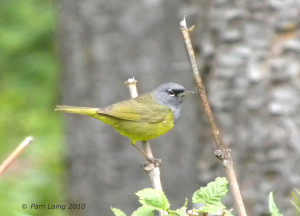
As the days lengthen and warmer temperatures creep northward over the North American continent, deciduous leaves unfold, insects emerge – and the warblers return from wintering in the south to nest and raise young. These little birds endure a long migration, some over large oceans, to take advantage of the long days and abundant food to be found in our northern summer.
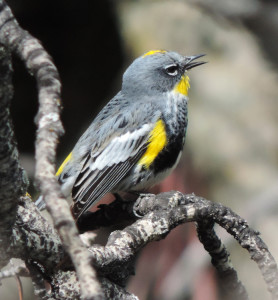
In our valley the first to return are almost always the Yellow-rumped Warblers. These pretty birds are among the larger warblers, but still small at 5 ½ “ (14 cm). Like all warblers they have small beaks, and feed on tiny caterpillars and flying insects. You will often see them ‘hawking’ from tree branches, flying out to snatch a passing insect, and returning to perch while they eat it. The flash of the yellow rump might catch your eye. Males have a richer coloration than females during the breeding season, but ‘off-season’ they both look alike. They breed all across Canada’s north, from coast to coast.
A rather drab warbler, the Orange-crowned Warbler is another early returnee. Yellow underneath and olive above, these birds often nest at higher elevations.
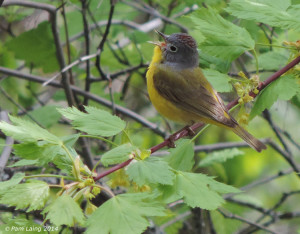
Similar but prettier is the Nashville Warbler, which has bright yellow underparts, and a pale grey hood. Look carefully; it also has a complete white eye ring. Occasionally you might catch a glimpse of its dull orange head patch. Nashville Warblers have a distinctive song, usually ending in a short trill. MacGillivray’s Warblers are similar to Nashville, but much darker. The eye ring is broken, just two white arcs above and below the eye, and the hood is dark grey.
This species only nests in western Canada and the US, and likes wetter forests.
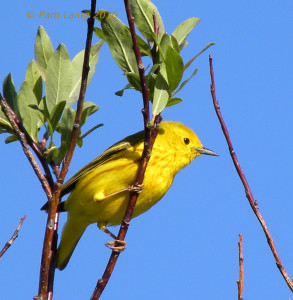
If you walk on the Greenway in Kelowna keep your eyes open for a Yellow Warbler. All yellow, with faint chestnut streaks down the breast, Yellow Warblers like to nest in bushes at the edge of woodlands, particularly near water. These birds are abundant, and they too nest all across Canada’s north and fairly far south into the US. Some warblers like to nest in marshes. One looks like a little bandit, with a black eye patch! He is the Common Yellowthroat. His song is very easy to recognize, “Witchety, witchety, witchety”.
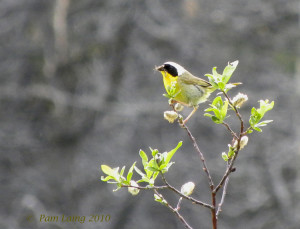
These are the warblers you are most likely to see. They can be hard to spot, as they arrive just when the leaves open on the trees. There is a good reason, since they feed on the caterpillars curled up inside those leaves. But even a fleeting glimpse is rewarding, since they are colourful songsters, worth searching for, and brightening our summer days.
Pam Laing, Okanagan birder







0 Comments